Rocky juniper "Blue Arrow": description, planting and care
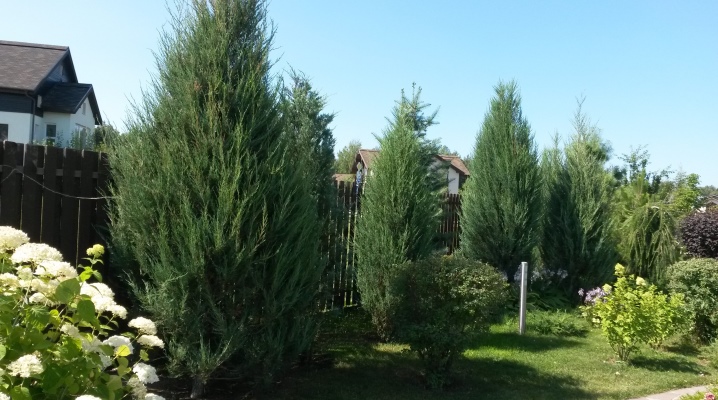
An evergreen coniferous plant, the Blue Arrow juniper, is a spectacular addition to the landscape of a summer cottage or a backyard plot. The plant has excellent decorative characteristics, has an interesting crown shape and takes root well in a northern European climate. To get a more complete picture of its features and characteristics, it is enough just to study in detail the description of this rocky juniper. In addition, the height of the plant and the correct cutting of its crown are often of great importance - it must be formed from the first years after planting.
Caring for the Blue Arrow juniper will not be difficult for an experienced summer resident or landscape designer. Moreover, the spectacular appearance of this plant noticeably enlivens the landscape, and with a group planting it allows you to get a very interesting design of the site. A beautiful arrow-shaped crown, directed upwards, and a bright unusual color of the needles give it a special decorative effect. It remains only to maintain it with timely pruning and not forget about the mandatory measures to protect the plant from pests.
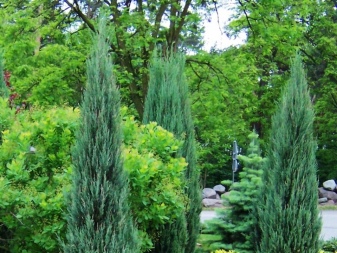

Description
Rocky decorative juniper "Blue Arrow" or "blue arrow" fully justifies its name. This type of plant belongs to the category of decorative conifers with a short stem. The branches grow almost from the base of the tree, its shape is considered columnar, but narrow. The average height of a tree by the age of 10 is 2.5-3 m with a crown diameter of no more than 0.5 m.
Growth rate is above average. The tree reaches a height of 15-20 cm. The growth per year is more modest in width - up to 5 cm.

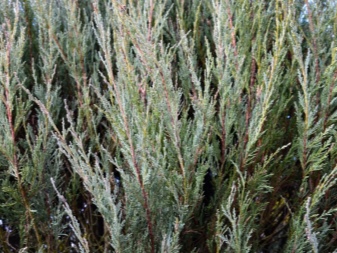
The root system has a surface type characteristic of all rocks of junipers, characterized by intense branching. The life span of a plant is 200-300 years.
"Blue Airrow" is a cold-resistant variety, capable of wintering without shelter, it can withstand temperature extremes up to -28-34 degrees Celsius. It is characterized by the preservation of needles on the lower part of the crown, which makes it possible to provide a higher decorative effect than other species. The shoots of the plant are tightly pressed against the trunk, have high rigidity, and tolerate snow and wind loads well.
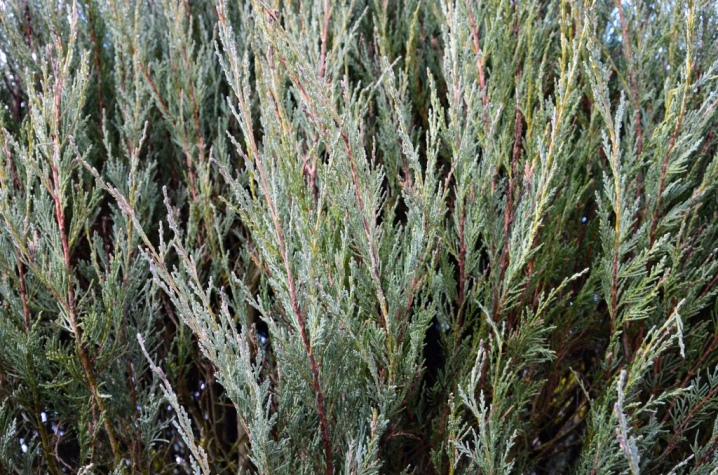
The needles of the Blue arrow juniper have a scaly structure, blue-blue color with a steel sheen, soft. On the branches of an adult plant, fruits develop in the form of cone berries of a bright blue hue with a light bluish bloom. The needles and resin contain phytoncides - substances with an antibacterial effect. Their presence helps to protect the plant from fungal infection, increases its immune resistance to disease.
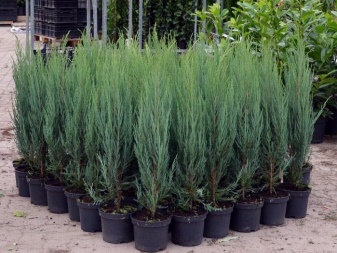

Differences from the "Skyrocket" variety
In fact, the differences from the Blue Airrow variety from the Skyrocket variety are quite obvious; confusion can arise only when buying seedlings. Among the most important points are the following.
- Plant height. Blue Arrow does not belong to tall ones, its average height is about 2 m, but it can reach 4 m. Skyrocket can grow up to 8 m, you cannot plant such a giant at the entrance to the house.
- Crown type. It is narrow, columnar, with a conical top at the Blue Airrow and columnar at the Sky Rocket. The difference is quite significant.
- Needle color. The considered variety Blue arrow has its shade of light blue with some elements of dove-gray. In Skyrocket, its color is gray-green, the heavenly tint appears only at a distance. Close up the plant is less decorative.
- Ability to keep in shape. Due to the tight fit and vertical orientation of the growth of the branches, the Blue Airrow has quite high, even without a decorative haircut, it remains compact, keeps its shape well. Skyrocket does not possess such advantages, its branches move away from the trunk as they grow and give the crown an untidy look.

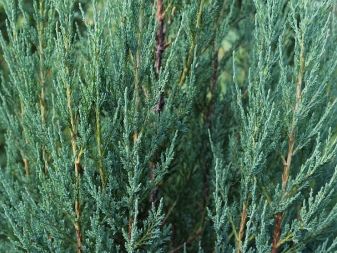
These are the main differences that can be distinguished between species. But experienced botanists may well find even more discrepancies in the appearance of the two varieties of conifers.
How to plant?
Planting the Blue arrow juniper is not too difficult. With an open root system, seedlings are sent to open ground in the spring, after the soil is completely warmed up. Autumn planting before frost is also acceptable. Plants grown in a container can be planted without seasonal restrictions, as soon as the snow melts and before frost.
Young juniper seedlings of this variety are photophilous, but prone to burns on the crown. It is recommended to exercise caution and shade the plants in the early years of their life. At the same time, the landing site itself should be well lit and closed from the wind. If there is not enough light, the plant will gradually lose its decorative effect, the needles will turn yellow, and will look pale and ugly.
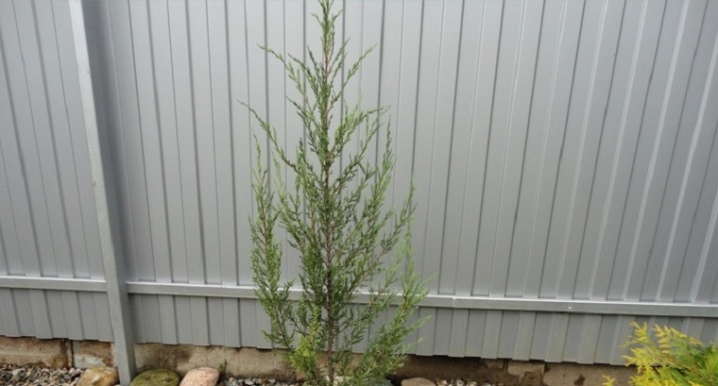
Rock junipers are undemanding to the composition of the soil and the neighborhood - they can be placed next to any plants without fear of diseases and pests. It is only important to pay attention to the proximity of groundwater.
It is better if the seedling is placed on a hill, hill or hillock, then it is not threatened with waterlogging and decay of the roots. High-quality drainage placed at the bottom of the planting pit will also help drain excess water.
When choosing seedlings, you should give preference to already acclimatized trees in containers. When transplanting, they better tolerate soil changes. In addition, the variety belonging of container plants usually does not raise unnecessary questions. The hole prepared for planting should be slightly larger in diameter than the root lump of soil.
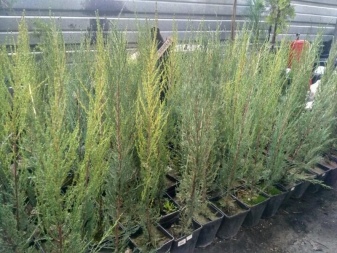
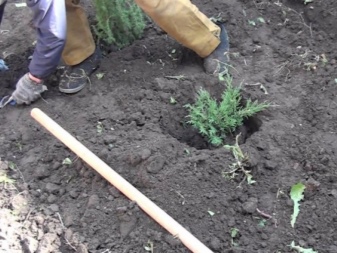
The bottom with laid drainage is covered with dredged soil mixed with a special compound recommended for growing conifers. It can be purchased ready-made or made by yourself. For conifers, loose, mineral-rich formulations are suitable that can ensure good growth and development of the tree. The optimal proportion: 50% peat and 25% each sand and turf.
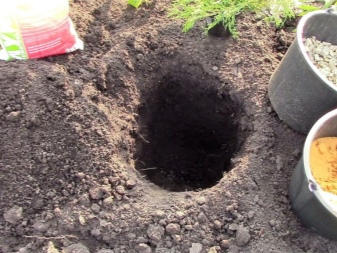
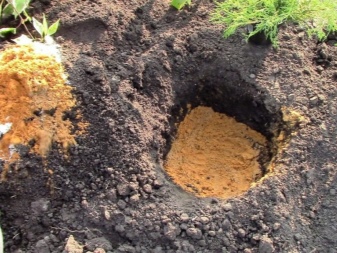
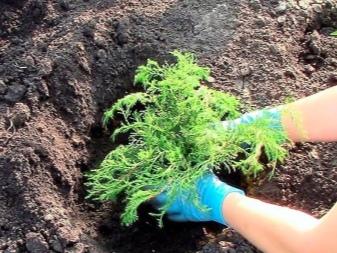
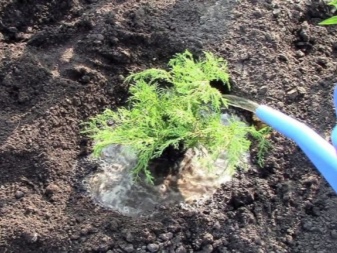
Before placing the plant in the hole, it is recommended to water the soil with a substance that stimulates the formation of roots. Further, a seedling is installed inside. The junction of the trunk and root system should be above the edge of the pit. If there is not enough soil, it is poured over. Then the hole is completely closed with soil mixture, in the near-trunk circle, the earth is watered, mulching with sawdust, shavings, crushed bark.
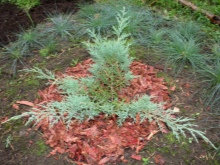
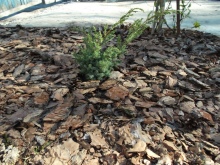
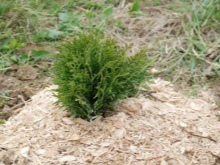
How to take care of it properly?
Beautiful decorative juniper "Blue Arrow" needs careful maintenance to maintain its attractiveness. He regularly requires the following procedures.
- Watering. Within 7 days after landing, it is performed daily, then every 10 days. During wet periods of the year, the frequency of applying moisture to the root should not exceed 1 time per month, otherwise the juniper will simply die. Sprinkling is mandatory for this type of conifers. It is carried out by installing sprinklers in automatic mode or from a spray gun, in the evening hours 2-3 times a week.

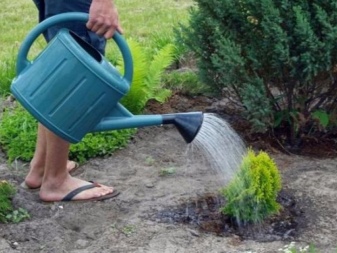
- Top dressing. Produced at the beginning of the growing season, in spring, with complex fertilizers for conifers. Applying nutrients more often can be harmful.

- Moisture retention. It is achieved by loosening and mulching the soil in the trunk circle. This avoids overheating of the soil and accelerated evaporation of moisture. Mulch can be classic vegetable - in the form of hay, tree bark, shavings, and also resemble drainage. In this case, it is made from pebbles, broken bricks.
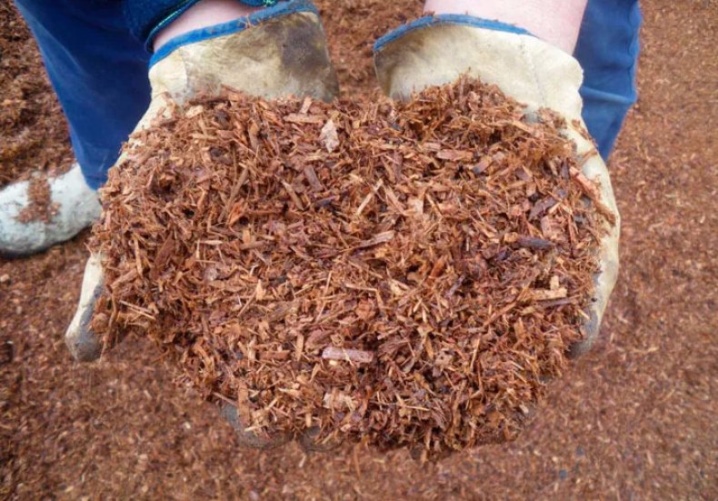
- Shaping haircut. Since the slightly conical crown of the Blue arrow juniper keeps its shape well, you can leave it without radical changes. But these trees are well suited for creating topiary of various shapes. A curly, shaping haircut is performed before the juices begin to move, up to 1/3 of the branches are cut at a time.
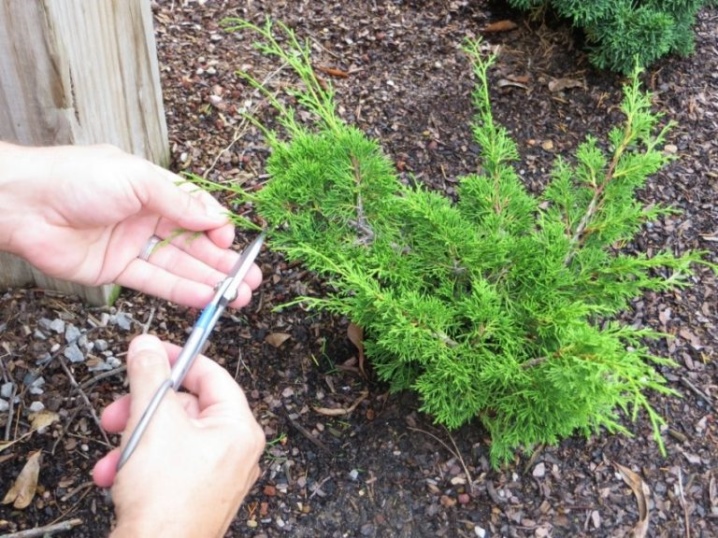
- Sanitary pruning. It is necessary to remove broken off or frozen, dead branches or shoots affected by the fungus. You can prune the tree in the spring or before wintering. At the end of the procedure, a fungicidal treatment of the plant is performed.
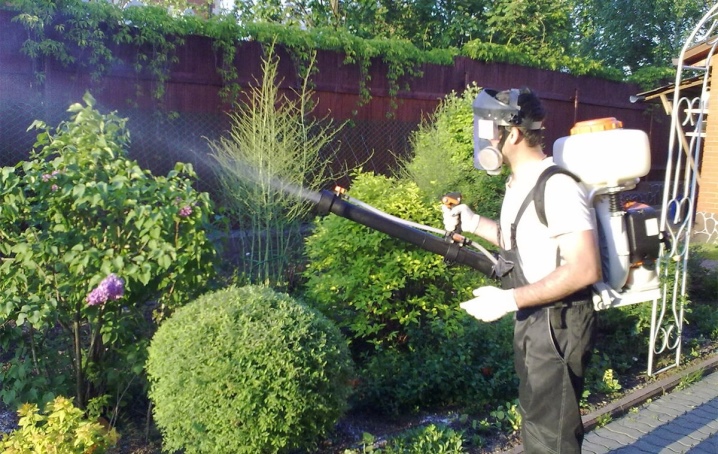
In winter, young rocky junipers are recommended to be wrapped with matting and tied with twine.
Adult trees no longer need these protection measures; they can withstand temperatures down to -34 degrees without any particular consequences.
Reproduction methods
The seed method of reproduction of rocky juniper is used only by breeders. The seeds have a long preparation period; on average, you can wait for seedlings up to 5 years. Much more popular is grafting, which uses young shoots cut in the spring. The place of separation from the mother trunk is cleaned, the seedlings are placed in a loose nutritious substrate based on peat in a greenhouse and left for rooting.

In autumn, runs are transplanted into containers - this type of cultivation is recommended for up to 2-3 years. Young trees for the winter are sent to a room with a temperature of about 0 degrees, occasionally watered. In the presence of a winter garden or greenhouse, it is possible to keep in them. Only plants at least 2 years old are planted in a permanent place.
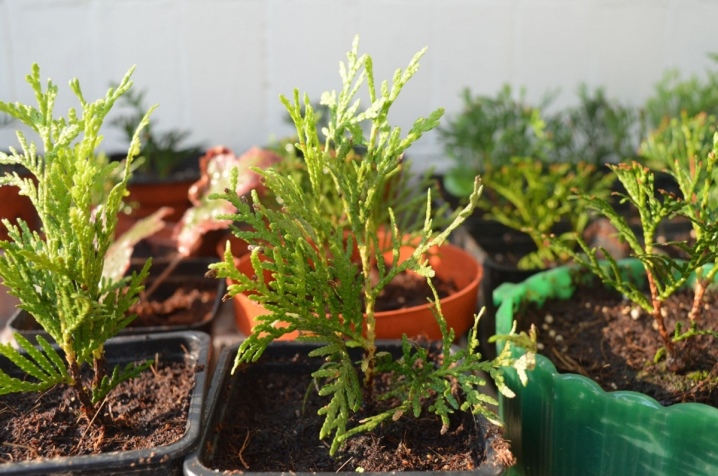
Diseases and pests
Juniper Blue arrow is not too susceptible to the development of various diseases, it has a strong, stable immunity. But the tree can still be infected, especially if you do the wrong pruning and do not take care of the fungicidal effect after it. Most often, a fungus appears on the branches - rust. It manifests itself in spots of a bright orange hue, the tree dries up, loses its former decorative effect.
The main sources of rust spreading in the garden are fruit trees and shrubs. It is not recommended to plant junipers next to them. If the disease has already been identified, the damaged parts of the plant should be removed and treated with an antifungal drug. It is repeated every 2 weeks until the causes of the problem are eliminated.
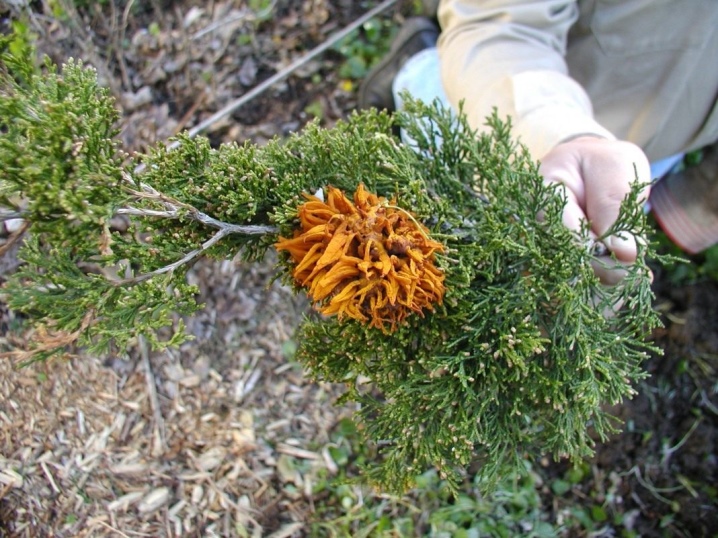
Also, regular preventive treatment of rocky juniper from pests is recommended: moths, aphids.
Spraying is performed every 2 weeks with specialized chemicals. It is better to choose insecticidal preparations with a complex effect.
If the needles turn yellow, this is most likely not a sign of illness, but a consequence of sunburn. In this case, the plant will suffer only from the south side, and the rest of the needles will remain bright. There is only one way of salvation - shading, creating an artificial shelter for the entire spring period. Young trees with tender shoots are especially often affected by the sun.
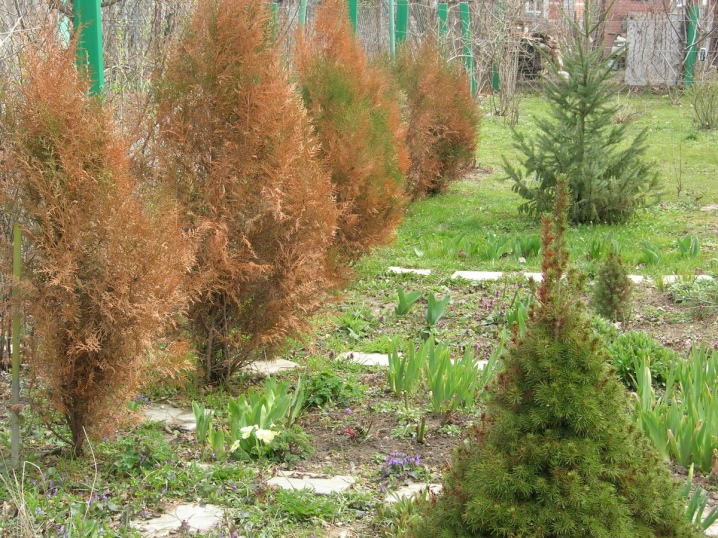
Use in landscape design
Landscaping with Blue Arrow Silver Blue Junipers produces truly impressive results. The plant is suitable for decorating large spaces: gardens, parks, estates, as well as for use in the country or local area. On a small area, a solitary or paired planting is most often used. When placed in containers or flowerpots, junipers can be used to decorate a terrace, balcony space or winter garden.
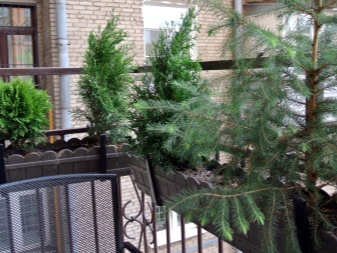

In the landscape of the plot, Blue arrow is harmoniously combined with conifers of different types, heights and colors. It can be planted together with thuja or fir, used as a decoration for a topiary garden. In addition, we can talk about the formation of mixed plantings. Here you can create elegant alleys or hedges, decorate rockeries and rock gardens.
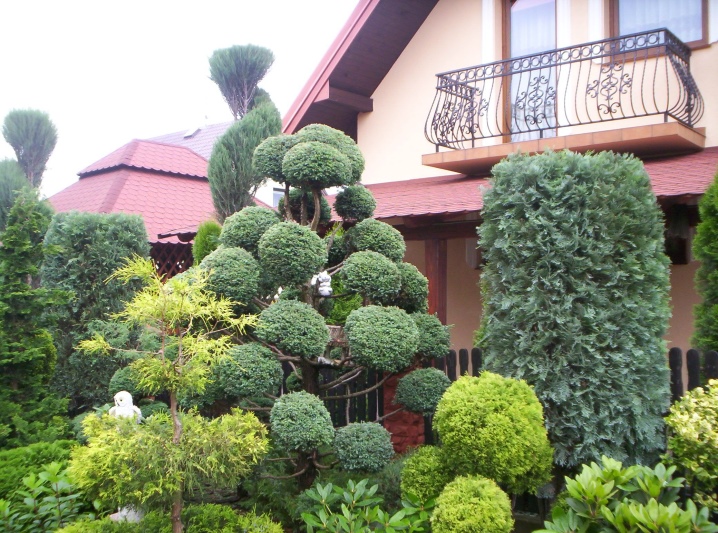
Column-shaped junipers look gracefully and neatly framed by entrance groups, entrances to the site. Planted in pairs at the porch, they create a feeling of solemnity and splendor. Landscapes decorated with Blue arrow trees with significant differences in height look interesting. For single planting, the plant can be placed in the middle of a well-kept lawn or in a resting area between benches.
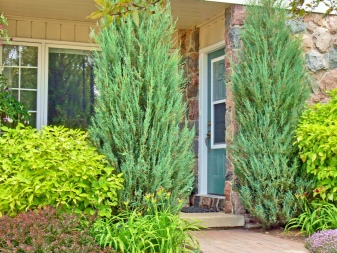
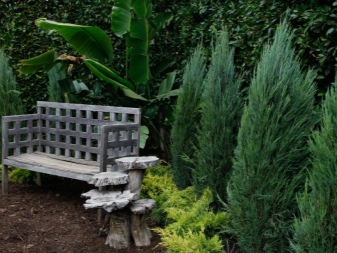
About the Blue Arrow juniper, see below.



































































The comment was sent successfully.